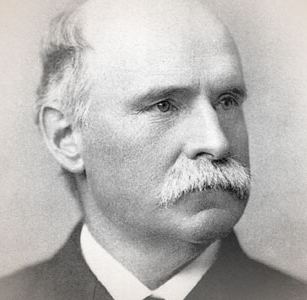 | ||
Drexel Institute of Art, Science and Industry was founded in 1891, by Anthony J. Drexel, with the main building dedicated on December 17 of that year. The convocation was attended by such figures as Andrew Carnegie and Thomas Edison, as well as the governor of Pennsylvania and the vice president of the United States, Levi Morton. Bishop Henry Potter officiated the convocation, and Chauncey Depew gave an address praising the new institution for its goal of preparing students for jobs in science and industry, as opposed to training lawyers and academics in abstract fields.
Contents
Early history
The Institute's first president was James A. MacAlister. Born in Glasgow, Scotland in 1840, he emigrated with his family to Wisconsin in 1850, attended Brown University and subsequently received his J.D. from Albany Law School in 1864. During his term as president (1891–1913), the institute offered a variety of courses in subjects ranging from art and illustration, mechanic arts, domestic arts and sciences, commerce and finance, teacher training, physical education, and librarianship. He also advocated lectures and programs that were open to the public, even granting access to the library to non-students. Another initiative was to offer classes in the evening that could be attended by working professionals.
From 1895 to 1898, renowned American Impressionist painter Colin Campbell Cooper taught courses in watercolor and architectural rendering. In 1905, the department of art was closed (except for the architecture program). In the same time period, the school expanded the main building eastward into additional buildings on Chestnut and 32nd streets. The school also grew from 70 graduates to 500.
Drexel became the Drexel Institute of Technology in 1936.
Expansion and University status: 1959–1984
During the administration of Drexel University presidents W. W. Hagerty, after whom the University City campus Library is named, and James Creese, Drexel underwent a period of rapid expansion constructing new classroom buildings or dormitories each year. The buildings constructed include the Kelly, Myers, Calhoun, and Towers dormitories, as well as most of the buildings surrounding the Quad, including Matheson, Korman, Disque, and Nesbitt. During this time President Hagerty led Drexel, which was just a college at the time, to full University status in 1970.
Decline and financial crisis: 1984–1995
After Hagerty's departure, admissions, enrollment, and the university's financial situation went into substantial decline. His successor, William S. Gaither, resigned due to pressure from the campus community in 1987 after allegations of sexual misconduct with staff members arose. The majority of problems occurred during and after the recession of the early 90s. Drexel was struggling to remain solvent, and began to use endowment funds to pay operating expenses. Gaither's successor, President Breslin, was not able to react to difficulties coming from lower admissions. There was even discussion of the school's being absorbed into the next-door University of Pennsylvania, until the selection of president Constantine Papadakis.
Rebirth: 1996–2009
In 1997 with the renovation of Van Rensselaer Hall, Drexel University began a period of expansion led by president Constantine Papadakis to enlarge the university, its student population, and its alumni funding base. Since 1997, Drexel has completed four new dormitories with plans for at least one more, expanded the research infrastructure with the construction of the Bossone Research Center, renovated various campus buildings and the main quad, and acquired the Queen Lane campus and Hahnemann University Hospital from MCP Hahnemann University. Papadakis has also added a School of Law, and secured millions of dollars worth of alumni grants, including several grants of more than $10 million. From 1996 to 2005 total revenue increased +331% to $612M, research funds increased +535% to $83M, the endowment increased +471% to $540M, and total enrollment increased +102% to 18,466. During this time undergraduate tuition increased +68% to $23,250/year.
Master plans for further construction projects were announced on October 16, 2006 during Drexel University's Founders Day and Convocation Celebration. The plan involves significant changes to the campus and buildings over at least a five-year period. According to President Papadakis the changes are estimated at around $350 million dollars.
Some of the anticipated changes included:
2009–present
In April 2009 C.R. "Chuck" Pennoni was named as interim president and Chief Executive Officer of Drexel University while Papadakis took medical leave. On April 5, 2009, President Papadakis died, which placed Drexel University in an interregnum period. In 2010, John Fry took over as president.
